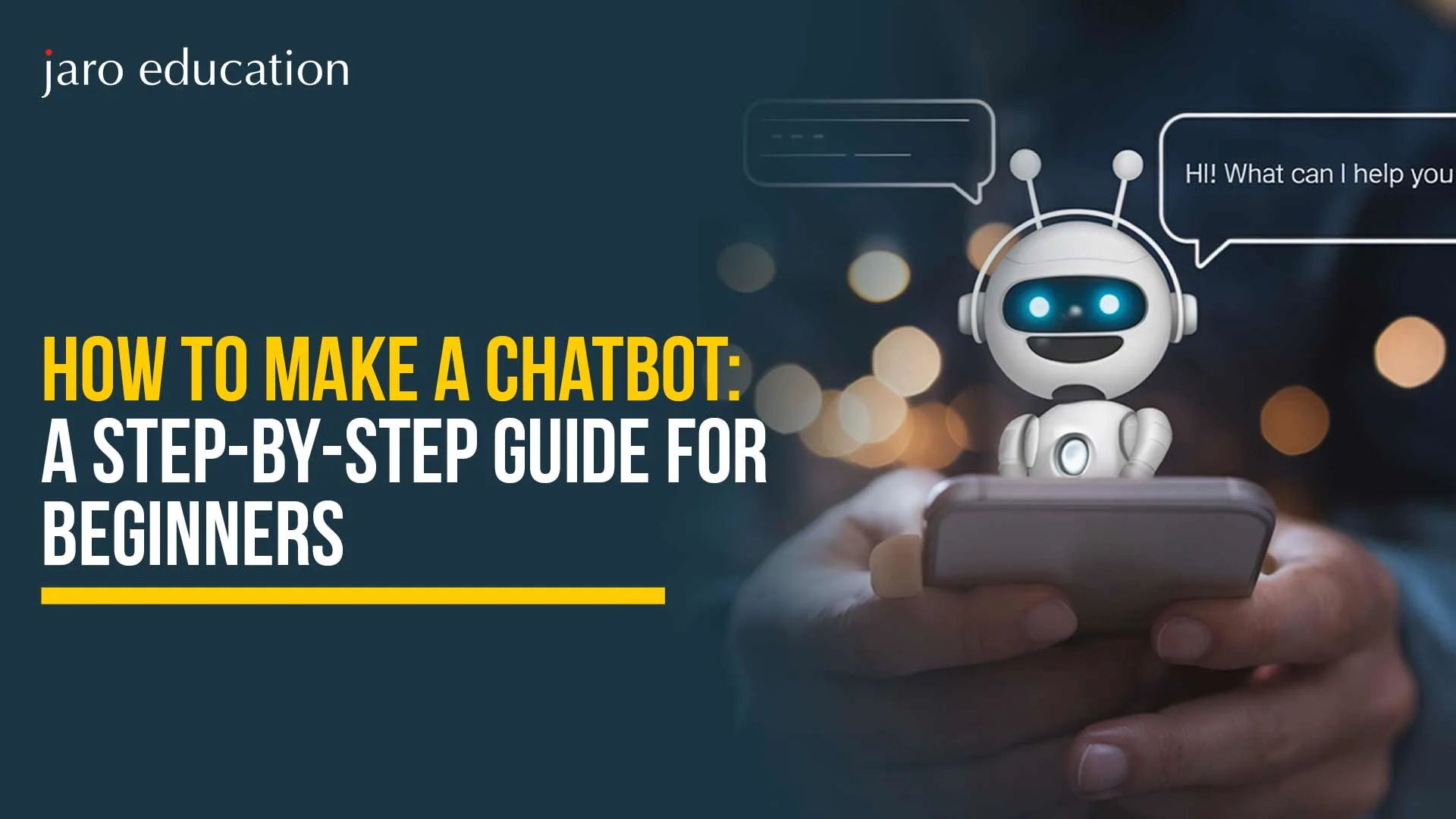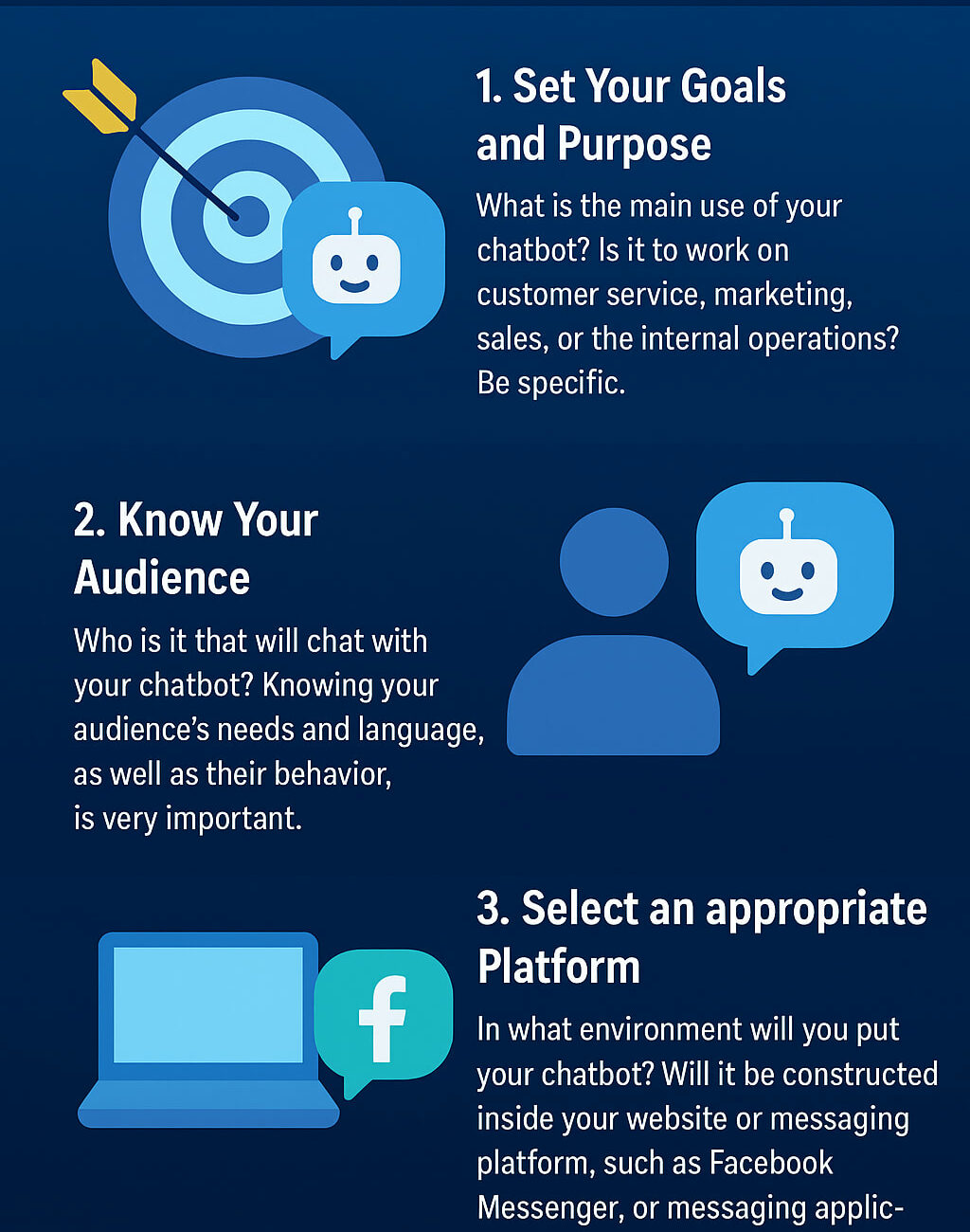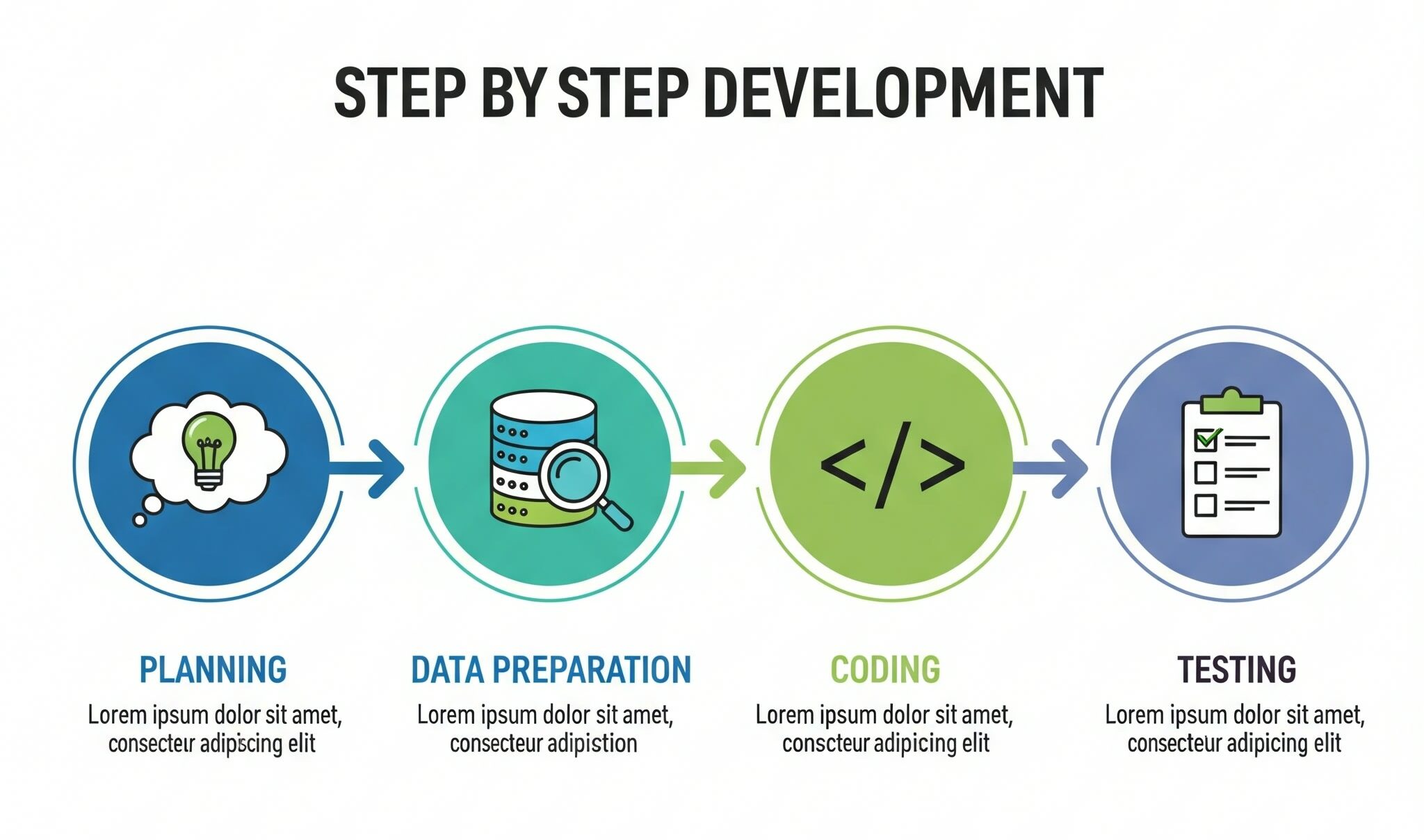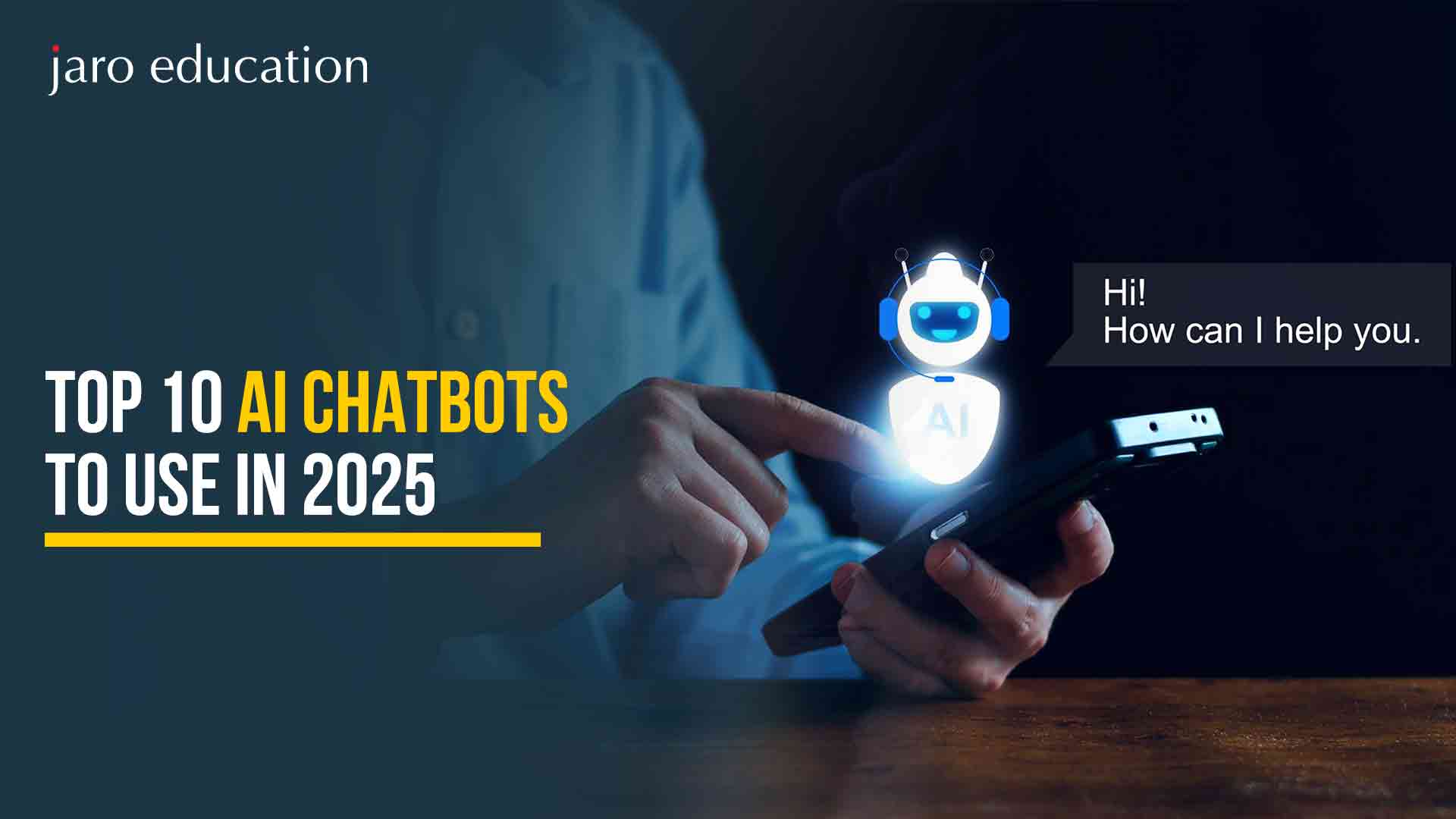How to Make a Chatbot: A Step-by-Step Guide for Beginners
Table of Contents

“Want to engage customers 24/7 without burning out your team? The answer is chatbots.”
Businesses in the age of digital first are now in need of smarter methods of customer engagement, instant customer support, and lead generation. How to create a chatbot is more than a technology trend – it is a game-changer. The reports further outline that the chatbot industry is expected to surpass the 1.3 billion mark within the next four years, with businesses saving more than 8 billion dollars per year. It is quite obvious that using chatbots is not a luxury but a need to be competitive. Then, how do you create a chatbot?
How to Create a Chatbot: Building the Foundation
Planning is the most important stage before you jump into coding or the choice of tools. Effective planning of how to make a chatbot is the key to a successful project. A lack of a distinct objective would make your chatbot unable to satisfy users and end up frustrating them instead of a relief. Therefore, what can build an effective chatbot bottom-up? One can begin by posing some elementary questions:

1. Set Your Goals and Purpose
What is the main use of your chatbot? Is it to work on the customer service, marketing, sales, or the internal operations? Be specific. As an example, a customer service chatbot could be working towards lowering customer support tickets by 30%, whereas a sales chatbot could be goal-oriented towards qualifying leads and raising conversion rates by 10%. An early definition of these metrics would assist you in measuring the success and justifying the investment. A survey conducted by HubSpot revealed that 48 percent of consumers prefer reaching out to a firm on live chat rather than calling them. That shows the great need for instantaneous, text-based dialogue, and chatbots can be the perfect instrument to satisfy it.
Read Also : Top 10 AI Chatbots to Use in 2025
2. Know Your Audience
Who is it that will chat with your chatbot? Knowing your audience’s needs and language, as well as their behavior, is very important when developing an effective articulation. A mentality that is cool and relaxed may be appropriate in the case of a young techie audience. A more formal and direct tone is more suitable in the case of a more business-oriented professional audience. Studies demonstrate that 56 percent of the population prefers to send a message to customer service instead of making a call. You can also make it more interesting and pleasing by adjusting the personality and responses of your chatbot to a particular audience.
3. Select an appropriate Platform
In what environment will you put your chatbot? Will it be constructed inside your website or messaging platform, such as Facebook Messenger, or messaging application, such as WhatsApp? Every channel is different in terms of technical specifications and the scope of audiences. A chatbot serving a webpage can also be newly formulated with web-based technologies, but a chatbot in a messaging application will need an explicit API. Early decisions affect the instruments and technologies that you will apply when development proceeds further.
How to Make a Chatbot: Selecting Your Tools and Technology
You already have a strong plan, so it is time to select the right tools to develop a chatbot. On the market, there are very simple no-code platforms to more complex custom development frameworks that have large optionality. The decision-making process will rely on your budget, technical skills, and the sophistication of the functions of your chatbot.
1. No-Code Platforms
Non-coders can use no-code tools such as ManyChat, Chatfuel, and Tars, which allow simple drag-and-drop interfaces with which one can build and deploy chatbots. They are best suited to create lead generation tool, general FAQs, and general customer conversation bots. They are so fast and cheap that when you know how to make a chatbot and use it, you can have a working chatbot of your own within a few hours.
2. Low-Code /Hybrid
The more flexible model is provided by such platforms as Dialogflow, Microsoft Bot Framework, and IBM Watson Assistant. They offer robust AI and Natural Language Understanding (NLU) through a visual interface, but can also import custom code in order to support more complex use cases. They are great options for more complex chatbots that can be used to cover more queries and be connected with other services.
3. Custom Development
To achieve the greatest freedom and flexibility, you may develop a chatbot yourself with programming languages such as Python (e.g., libraries spaCy or NLTK) or JavaScript. It works best with extremely complex chatbots with special needs, like having custom requests, like the chatbot connecting with specialist databases or special services. It is a time- and resource-consuming model, though it a genuinely unique and robust response. In a 2023 report by Statista, the most widespread programming language utilized in AI and machine learning was Python; thus, this is a popular programming language choice when creating custom chatbots.
Chatbot Development: The Step-by-Step Process to How to Make Chatbot
That being said, you have your plan and tools ready: you can now start the chatbot development process. That is when you can bring your vision into its operational application. Here, the success secret is to repeat step by step.

1. Create the Conversational Flow
Again, this can be a very crucial and most ignored step. Prior to you going ahead to type the first line of code, you have to plot out the discussion. Draw up a flowchart or use specialized design software to draw a picture of how a user will use your chatbot. Identify major entry points, the various directions that a conversation may develop, and a response to each case. Think of every input that a user may make, and even consider unexpected inputs, and plan how to make a chatbot that would easily deal with them.
2. Ready Your Data
A chatbot can be as intelligent as it is educated. In the case of a rule-based chatbot, it defines a thorough bank of questions and answers. In the case of an AI-driven chatbot, you will have to gather a huge amount of data from user requests and their intents. E.g., the intent of customer service would encompass such queries as ‘I need assistance with my order, my product is inoperative, how to make a chatbot?’ and ‘How do I contact support?’ That is the basis of the intelligence of your chatbot.
Read Also: The Role of ChatGPT & AI Chatbots in Online Education
3. Develop the Core Logic
You now have to create the core logic of the chatbot using your favourite platform or programming language. These include the establishment of the intents (what the user privately wants to do), content (the important information in a query, such as a product name or a date), and the actions that the chat prioritizes should be carried out by the chatbot. In the case of a user typing in, “I want to buy a blue shirt,” the intent can be understood as “purchase”, and the entities can be “blue” and “shirt”. The logic used by your chatbot will be to show all the blue shirts in your product spam.
4. Implementation and API Calls
In order to make your chatbot genuinely helpful, you will have to connect other services through it. It may be your e-commerce site, a CRM solution, or a knowledge base. The most common integrations are performed using APIs (Application Programming Interfaces), which enable your chatbot to do such things as view an order status, update a customer record, or access data in an external database. This is an important piece of chatbot development that can turn a mere chatting tool into the formidable business tool it is today.
How to Create an AI Chatbot: Adding a Layer of Intelligence
Although a simple rule-based chatbot would indeed work well with rudimentary tasks, it is artificial intelligence that will provide the power. Then, how to make a chatbot, such as an AI chatbot that would interpret the natural language and reply to it? Ultimately, this concept can be simplified to Natural Language Processing (NLP) and machine learning.
- The Role of Natural Language Processing (NLP)
NLP is the branch of computer science that makes machines comprehend, interpret, and generate the language of humans. It is the driving force behind the AI chatbot and its capacity to understand what a user wants to accomplish and tease out the pertinent information from his/her request. To give an example, NLP will enable the chatbot to recognize that both “I need help with my new phone” and “My smartphone isn’t working” have the same intentions, i.e., they need technical support.
- Knowledge is the embodiment of what has been experienced; therefore, this is the knowledge that will productively come to mind when training the AI Model.
Here is where the data you have prepared before comes in. To train your chatbot to identify the various intents, you will use a machine learning model where you will use examples you will provide to the chat through training. The better, the more information you put in the model, the more intelligent and precise it gets. It is an iterative training process, and it also needs continuous improvement. However, you must train your model by querying it and ensuring that misconceptions thereof need to be rectified to enhance performance with time.
- Processing Unexpected Queries
No matter how you make your chatbot trainable, there will always exist queries that are not recognized by your chatbot. This is where you have to apply a fallback strategy. The most effective means would not be to simply assert innocence but to softly direct the user to the primary discourse or to resolve to engage them with a human operator. This maintains a good user experience even when the chatbot does not return a direct reply.
The Chatbot Project: Best Practices and Pitfalls to Avoid
And a chatbot project is not a technical exercise; rather, it is a strategic initiative that involves strategic planning and implementation. When it comes to the successful completion of your project, remember the following best practices and avoid the following pitfalls.
1. Best Practices
Have Realistic Expectations: Chatbots are potent, but they are not a magic bullet. Explain to your users what your chatbot is capable/not capable of doing.
Start Simple, Iterate Frequently: Do not set out to make the best chatbot ever on the first day. First, create a minimum viable product (MVP) that has a solution to a particular problem, then you add functionalities depending on what the users suggest.
User-Centric Design: In everything you do, make it user-centred. Combine the dialogue to be intuitive and the responses conversational, and make the entire interface seamless.
Continuous Revision and Evaluation: When your chatbot is launched, continuously improve it. Examine conversation logs and discover where improvement is necessary, and retrain your model with new updated information.
Read Also : 20 + AI Tools for Transforming Online Learning
2. Common Pitfalls
Constructing a Chatbot that Serves the Unneeded Function: In case the issue can be addressed faster and more cost-effectively with an FAQ page or a contact form, a chatbot does not seem advantageous.
Overpromise and Under-deliver: If you are selling a simple rule-based chatbot and not a human-like AI, don’t sell it as an AI. The result of this will be user frustration.
Neglecting the Hand-off to a Human: Human agents must not be neglected; chatbots must be complementary. Give users an obvious and convenient method of contacting a human being when the chatbot is incapable of assisting them.
Inconsistent Call to Action (CTA): When a user has successfully gone through an interaction, what is he/she supposed to do next? Ensure that you have an explicit call to action, be it purchasing a product, downloading a guide, or subscribing to the newsletter. According to one report by LivePerson, 67 percent of consumers have experienced customer service supported by a chatbot in the past 12 months, so don’t worry too much about whether people are ready to interact; just make sure that the interaction achieves what you hope.
Chatbot Website: Integrating and Launching Your Creation
This is the last process, which involves integrating your chatbot and making it available to the community. The creation of a chatbot on a chatbot site is a simple mechanism that needs precision to make it smooth to use.
- Website Integration
The majority of chatbot platforms offer just a simple code snippet that you can insert into your website’s HTML. You should put this code on your page, where it will usually launch the chatbot in the bottom right corner. Style the look and feel of the widget to your brand.
- User Testing
Perform comprehensive testing of the users before launch. Test with a select few users to identify bugs, usability problems, or dead ends in the conversation. The stage is important in intercepting the issues before a wider group of people falls under its influence.
- Launch Monitoring and Post-Launch Monitoring
When you have assured yourself of your chatbot, then it is time to go live. Yet this is not all the work. After the launch, you are required to monitor the work of your chatbot proactively. Monitor important metrics with the help of analytics, such as the number of conversations, user satisfaction ratings, and the success rate of different intents. It is priceless in terms of continual betterment and the fine-tuning of your bot dialogue skills. Gartner says that currently, one-fourth of customer service activities employ virtual customer assistants or chatbots, and that by 2025, that figure will be half. Such a quick adoption entails that your chatbot must be dynamic and able to respond to trending customer needs.
Conclusion: Your Quest to How to Craft a Chatbot
The development process towards a successful chatbot is an adventurous one. It begins with a clear objective, proceeds to the deliberate choice of the tools to be used, and ends in an ongoing cycle of developing and testing, followed by improving the tools. Building on How to build a chatbot, understanding the conversation process of building a chatbot, to finally understanding how a chatbot works and launching it on your chatbot site, these steps are all building blocks to a more efficient and customer-centric operation. Having carefully read this elaborate guide, you now know what it takes to create a chatbot, but more importantly, you have a plan of how to make a chatbot and a mighty tool in helping grow your business and improve the user experience.
Frequently Asked Questions
How to make a chatbot step by step for beginners?
Beginners can make a chatbot by learning the basics of natural language processing (NLP), choosing a chatbot development platform (like Dialogflow, Rasa, or Botpress), designing conversation flows, and deploying the chatbot on a website or app.
How to create a chatbot without coding?
You can create a chatbot without coding using platforms like Tidio, ManyChat, or Chatfuel that provide drag-and-drop chatbot builders for websites and social media.
How to build a chatbot using Python?
To build a chatbot in Python, you can use libraries like NLTK, spaCy, or frameworks such as Rasa and ChatterBot. Python offers flexibility for creating both simple and AI-powered chatbots.
How to create an AI chatbot like ChatGPT?
To create an AI chatbot like ChatGPT, you need a large language model (LLM) such as OpenAI’s GPT, proper training data, API integration, and a front-end interface for user interaction.
How to develop a chatbot project for final year students?
For a final year project, you can develop a chatbot for customer service, education, healthcare, or e-commerce using tools like Dialogflow or Rasa and integrate it into a website or mobile app.

















